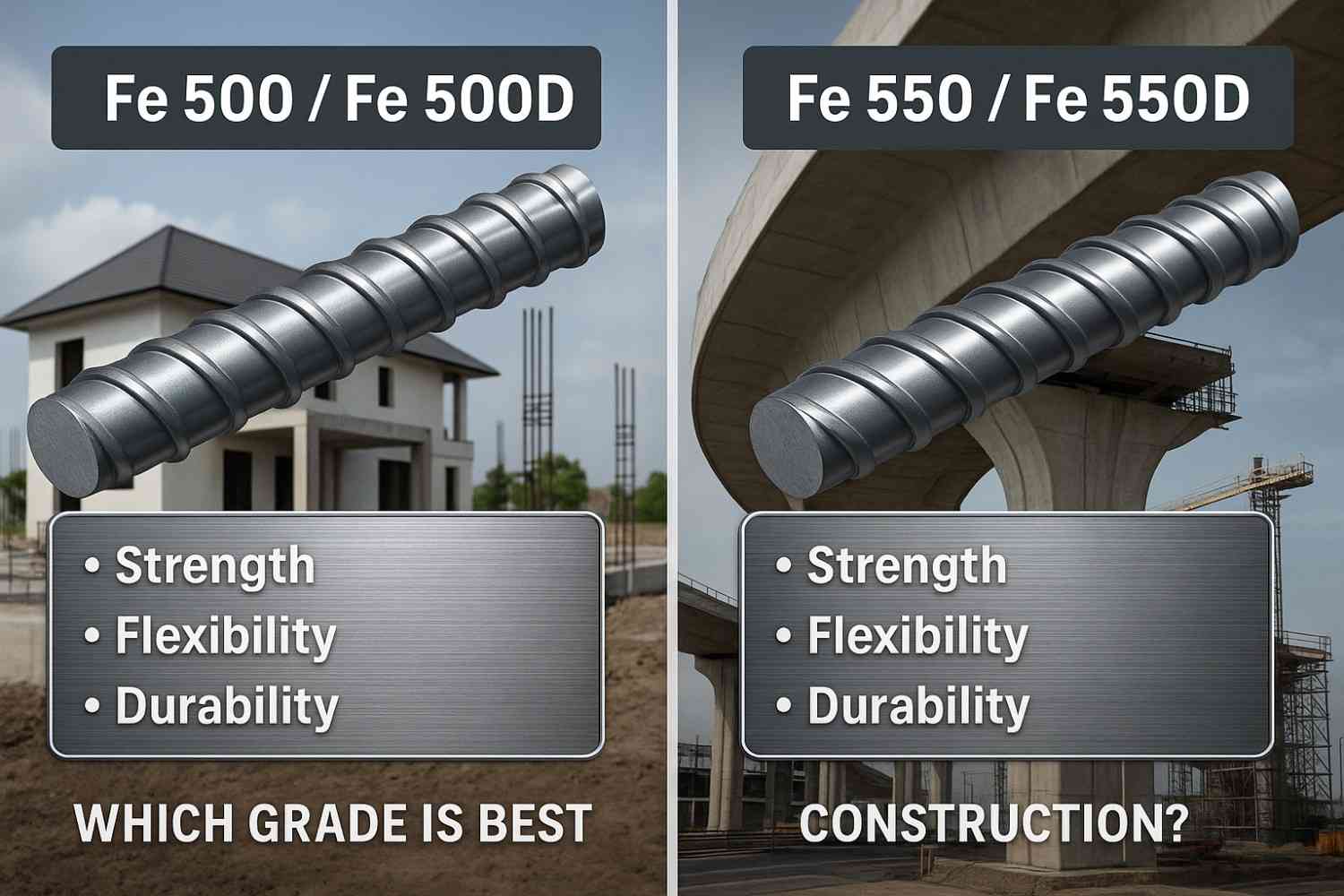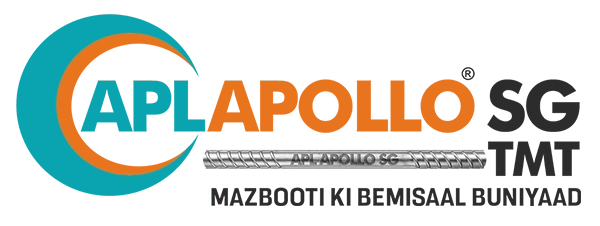
Introduction
When selecting TMT bars for construction, one of the most common queries builders, engineers, and contractors ask is:
👉 “What is the difference between Fe 500 and Fe 550 TMT bars?”
👉 “Should I use Fe 500D or Fe 550D for my project?”
These are not just technical questions — the right choice impacts strength, ductility, cost, and safety of your project. In this article, we’ll break down the key differences between Fe 500 vs Fe 550 TMT bars, along with the upgraded D variants (Fe 500D & Fe 550D), so you can make an informed decision.
What Do Fe 500 and Fe 550 Mean?
The ‘Fe’ stands for iron, while the numbers (500, 550) indicate the yield strength in N/mm².
Fe 500 = 500 N/mm² yield strength
Fe 550 = 550 N/mm² yield strength
In simpler terms:
Fe 550 is stronger than Fe 500.
But Fe 500 (especially Fe 500D) offers higher ductility, making it more flexible under stress (important in earthquake-prone zones).
Fe 500 vs Fe 550: Tabular Comparison
| Property | Fe 500 | Fe 550 |
|---|---|---|
| Yield Strength | 500 N/mm² | 550 N/mm² |
| Tensile Strength | ~545 N/mm² | ~585 N/mm² |
| Elongation (%) | ~16% | ~14% |
| Flexibility/Ductility | Higher | Lower |
| Best For | Residential & seismic zones | Industrial & heavy-load projects |
| Cost | Moderate | Slightly higher |
Fe 500D vs Fe 550D: The Ductility Factor
The “D” in Fe 500D/Fe 550D stands for Ductility. These bars are designed with higher elongation properties than standard Fe 500 and Fe 550.
| Property | Fe 500D | Fe 550D |
|---|---|---|
| Yield Strength | 500 N/mm² | 550 N/mm² |
| Elongation (%) | 18–20% | 16–18% |
| Seismic Resistance | Excellent | Very good |
| Crack Resistance | High | High |
| Applications | High-rise buildings, bridges, homes in earthquake zones | Large industrial projects, heavy foundations, metro rail, dams |


Which TMT Bar Should You Choose?
For House Construction: Fe 500D is the most recommended due to its balance of strength and flexibility.
For Multi-storey & Commercial Buildings: Fe 550D provides extra strength for load-heavy structures.
For Seismic-Prone Areas: Always prefer D grades (Fe 500D or Fe 550D) for better safety.
For Contractors Focused on Cost Efficiency: Fe 500 (non-D) can be used where ductility is not a primary requirement.
Why Contractors Prefer APL Apollo TMT Bars
APL Apollo TMT bars, supplied by SG Mart Limited, are manufactured using advanced Tempcore technology. Builders trust them for:
Consistent grades available (Fe 500, Fe 500D, Fe 550, Fe 550D)
Superior earthquake resistance (high elongation)
Corrosion & fire resistance for long-term durability
Strict BIS & ISI certification
Example: In recent projects in Lucknow and Patna, contractors selected Fe 550D APL Apollo TMT bars for high-rise commercial towers due to their unmatched strength and timely bulk supply by SG Mart Limited.
Key Takeaways
Fe 500 vs Fe 550: Fe 550 is stronger, but Fe 500 is more flexible.
Fe 500D vs Fe 550D: Both offer better ductility, with Fe 500D best for homes and seismic zones, while Fe 550D is best for industrial & mega projects.
Always buy BIS-certified, ISI-marked TMT bars from trusted suppliers like SG Mart Limited.




Pingback: Integrated Performance of TMT Bars: Strength, Ductility, Fire & Cost Analysis
Pingback: Post-Monsoon TMT Buying: Why Oct–Nov Is Critical for Contractors